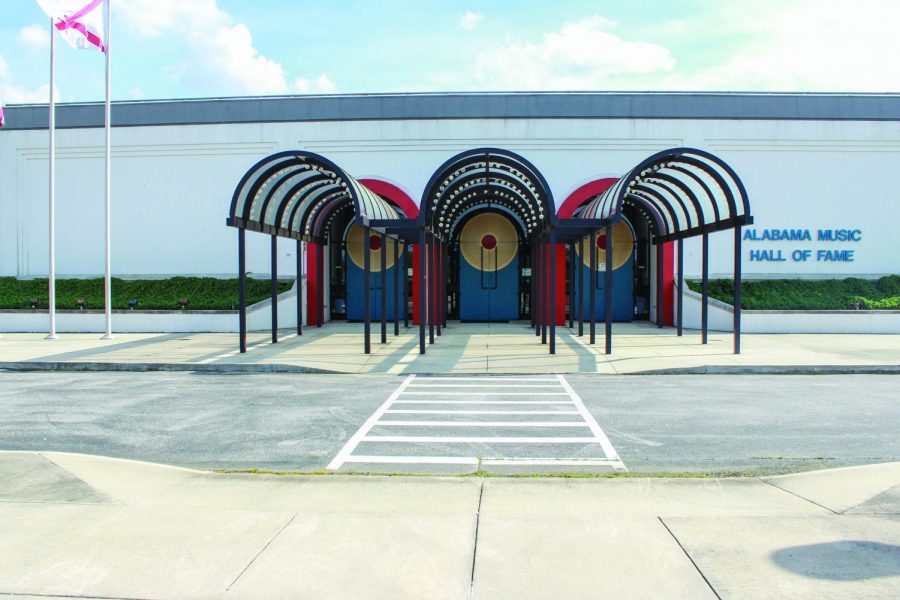Roots of American Music Trail offers local history
June 24, 2015
Not only will you find the beautiful campus of the University of North Alabama in the northwest corner of Alabama, but also a rich and diverse musical heritage.
Legend says the Tennessee River was once called “the singing river” by the Yuchie Tribe because the rapids in the river sounded like a woman singing, according to the Roots of American Music Trail website.
American Indian tribes who lived here considered music an important part of their lives and customs. Scots-Irish born settlers brought Celtic traditions and made the fiddle part of their celebrations. The African slaves sang songs of spiritual hope and played the banjo during their years on the plantations.
All of these blended together to create new musical sounds and styles that we still listen to today.
In later years, the region became known for the blues. W.C. Handy was the first musician to “identify, arrange, publish and popularize the blues sound,” according to the Muscle Shoals National Heritage Area website.
He was also the first person to bring American music to Europe, said Director of the Muscle Shoals National Heritage Area Judy Sizemore.
“He took our music around the world,” she said.
There is such an amazing amount of music history for such a small area.
“Right here in Florence we had the father of the blues, W.C. Handy, and the father of rock ‘n’ roll, Sam Phillips,” Sizemore said.
Sam Phillips was born on a farm near Florence, Alabama, in 1923. The son of poor tenant farmers, he was introduced to music at a young age as he listened to the black laborers he and his parents worked next to sing as they worked, according to the biography.com website.
The music left an impression on him and spurred him to eventually start his own recording studio and record label, Sun Records, in Memphis.
There, Phillips discovered such talents as Johnny Cash and Elvis Presley.
He and his family founded the Big River Broadcasting Co., which owns several radio stations in Florence.
The region became known as the “Hit Recording Capital of the World” when more hit singles were being produced here than in other cities known for music producing, such as New York and Nashville.
The Roots of America Music Trail gives people the opportunity to experience and study the musical heritage of the area.
“These people really made a difference in the music that we listen to,” Sizemore said.
The trail is meant to be a self-guided tour and soon visitors will be able to visit a historic site, dial a number and hear what happened there, Sizemore said. For those with smart phones, a QR code will be available for use to watch a video.
One good way to get an idea of the types of music-makers who have made their marks in this area before heading out on the trail is to watch the “Muscle Shoals” documentary.
“It will give a wonderful overview of part of our musical history here,” Sizemore said.
After that, visit the Muscle Shoals National Heritage Area building located in the O’Neal House next door to the Off Campus Bookstore.
Judy Sizemore or another employee will direct you to the best places to visit.
The Alabama Music Hall of Fame, Muscle Shoals Sound Studio and FAME Recording Studios are a few places visitors can tour. The W.C. Handy Birthplace, Museum and Library is also a popular attraction.
The Alabama Music Hall of Fame not only recognizes local artists, but artists from all over the state. Lionel Richie, the country music band Alabama and Hank Williams have all been inducted into the Hall of Fame.
Located in Sheffield, The Muscle Shoals Sound Studio at
3614 Jackson Highway has been host
to some popular acts in the past. It was the setting for Cher’s 1969 album titled 3614 Jackson Highway. Other artists such as Linda Ronstadt, Rod Stewart, James Brown and Willie Nelson recorded some of their music here.
FAME Recording Studios in Muscle Shoals was the first successful professional recording studio in Alabama. The worldwide attention grew for FAME when artists such as Aretha Franklin, Otis Redding and Etta James began recording their hit classics there. Other artists who have recorded music at FAME include Little Richard, the Osmonds, Shenandoah and Darryl Worley. This recording legacy continues today with artists Angela Hacker, Jason Isbell, Drive-by Truckers and many more.
Father of the blues W.C. Handy’s home is on West College Street in Florence, but was
originally built at Cherokee and Beale
streets. A historic marker stands there today. At the museum and home you will
find collections of Handy’s personal papers, photographs and items such as handwritten sheets of music for many of his famous
works.
Each year the W.C. Handy Music Festival celebrates the historical roots of the music of The Shoals. The annual July festival includes more than 200 events in four counties, and 2015 marks the 34th year for the event. Ten days filled with music and fun will be right here in your own backyard.
And if, after visiting these locations, you ask Sizemore why we have so much music in such a small area, she will have an interesting response: “A lot of people say it’s in the water.”












